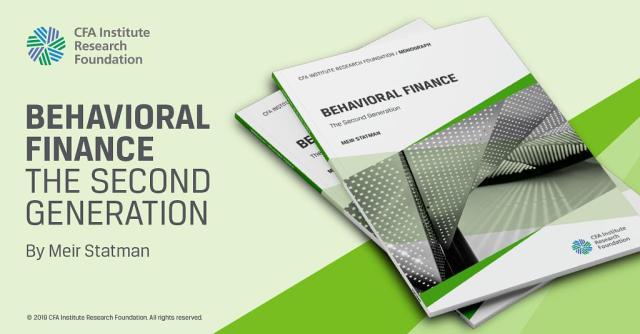[ad_1]
To mark Enterprising Investor’s 10th anniversary, we have compiled retrospectives of our coverage of the most critical themes in finance and investing over the last decade.
Much of the philosophical architecture of modern finance — modern portfolio theory (MPT), the capital asset pricing model (CAPM), the efficient market hypothesis (EMH), etc. — rests on the underlying rationality of the collective human inputs that drive market movements. Markets are fundamentally efficient, conventional theory holds, and investors on the whole want to maximize returns for a given level of risk and will make investment decisions accordingly.
But over the decades, the work of Herbert Simon, Daniel Kahneman, Amos Tversky, Robert J. Shiller, and Richard H. Thaler, among others, challenged this orthodoxy and demonstrated that market and investor behavior are often much more ambiguous than these theories would suggest.
Whatever investors were doing, these researchers found, they were not following the “rational model” of homo economicus envisioned by conventional finance.
Of course, Kahneman, Shiller, and company were hardly preaching to an empty cathedral. Evidence of collective human biases and irrationality in finance was never especially difficult to find. But the global financial crisis (GFC) and all that has come afterward has further invigorated interest in behavioral finance.
It’s not difficult to see why. In the Great Recession’s shadow, the financial markets have served up too many anomalies, from negative interest rates to the GameStop fiasco, than conventional theory can possibly account for. And in the quest for alpha, meanwhile, many have come to see MPT and its associated tools as incongruent and possibly counterproductive.
Since its launch in the fall of 2011, Enterprising Investor has showcased the scholarship of behavioral finance’s top luminaries as well as its critics, while our own contributors have added their analysis and perspective to the subject. What follows is a selection of some of our more impactful coverage. Collectively, these contributions offer a glimpse into the evolution of financial thinking over the last decade.
While behavioral finance has helped highlight how modern finance has sometimes failed to account for market phenomena, it has yet to set forth an integrated model that replaces it. Whether it ever will is an open question, but perhaps not a critical one: Given the complexity of 21st-century markets, that one theoretical framework will ever encompass the full breadth of market activity may be wishful thinking. But at the very least, as this collection demonstrates, viewing conventional finance through a behavioral lens can yield critical insight.
For Better Valuations, Avoid These Five Behavioral Mistakes
Michael Mauboussin believes investors can generate more accurate valuations and improve their investment decision making by avoiding five behavioral pitfalls. David Larrabee, CFA, explains.
Daniel Kahneman: Four Keys to Better Decision Making
Daniel Kahneman explored some of the key ideas that have driven his scholarship, including intuition, expertise, bias, noise, how optimism and overconfidence influence the capitalist system, and how we can improve our decision making, at the 71st CFA Institute Annual Conference. Paul McCaffrey provides an analysis.
Richard H. Thaler: To Intervene or Not to Intervene
Richard H. Thaler advises investment decision makers to study the inclinations and biases of all market participants as a means of generating returns. Shreenivas Kunte, CFA, CIPM, considers Thaler’s perspective.
Robert J. Shiller on Bubbles, Reflexivity, and Narrative Economics
“Economists want to standardize the understanding of economic events,” Robert J. Shiller explains in a wide-ranging conversation with Paul Kovarsky, CFA. “They want to have a simple model. The problem is it’s hard to standardize our understanding because ideas change and people’s thinking changes through time.”
Meir Statman on Coronavirus, Behavioral Finance: The Second Generation, and More
Meir Statman discusses the second generation of behavioral finance, how it can inform our understanding of artificial intelligence (AI) and environmental, social, and governance (ESG) investing, as well as our response to the recent coronavirus epidemic, among other topics, in an interview with Paul McCaffrey.
In this series, C. Thomas Howard and Jason Voss, CFA, critique MPT and what they see as its deleterious effect on active management and explain how leveraging behavioral insights could revive the discipline.
The Discovering Markets Hypothesis (DMH)
Thomas Mayer, PhD, CFA, attempts to bridge the divide between conventional and behavioral finance with the Discovering Markets Hypothesis (DMH), which he developed with Marius Kleinheyer.
What Does Loss Aversion Mean for Investors? Not Much
Contrary to the conventional wisdom of behavioral finance, the primacy of loss aversion may actually be overstated, according to David Gal.
Have the Behaviorists Gone Too Far?
“It is tempting, if the only tool you have is a hammer, to treat everything as if it were a nail,” Abraham Maslow wrote. Ron Rimkus, CFA, draws a parallel between Maslow’s hammer and behavioral finance and wonders if it’s being applied too broadly.
How to Read Financial News: Home Country, Confirmation, and Racial Bias
Few question the prevalence of home country and related biases: Most will readily acknowledge their existence and concede that they themselves are prone to them. Yet many of us have a much harder time accepting racial bias as a similarly prominent phenomenon that may influence our behavior. Robert J. Martorana, CFA, makes the case for recognizing and correcting for such biases.
Race and Inclusion Now: Action Points for Investment Management
How can the investment management industry better embrace diversity? Machel Allen, CFA, Stephanie Creary, and John W. Rogers, Jr., gave their takes in a CFA Institute webinar. Lauren Foster and Sarah Maynard distill the key takeaways.
If you liked this post, don’t forget to subscribe to the Enterprising Investor.
All posts are the opinion of the author. As such, they should not be construed as investment advice, nor do the opinions expressed necessarily reflect the views of CFA Institute or the author’s employer.
Image credit: ©Getty Images/ Highwaystarz-Photography
Professional Learning for CFA Institute Members
CFA Institute members are empowered to self-determine and self-report professional learning (PL) credits earned, including content on Enterprising Investor. Members can record credits easily using their online PL tracker.
[ad_2]
Image and article originally from blogs.cfainstitute.org. Read the original article here.




